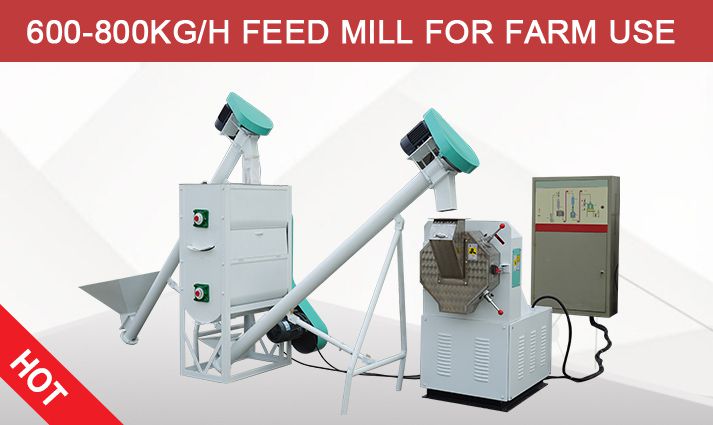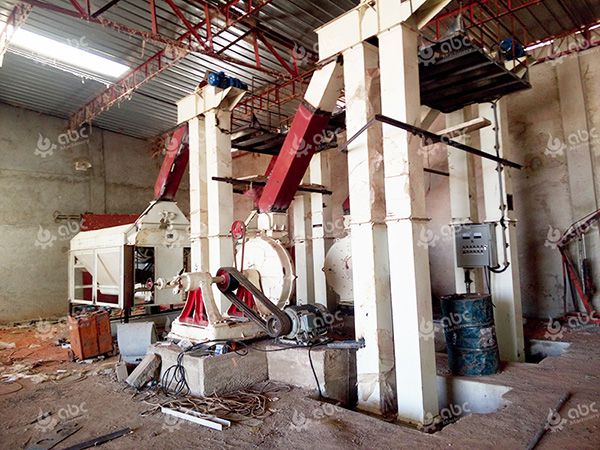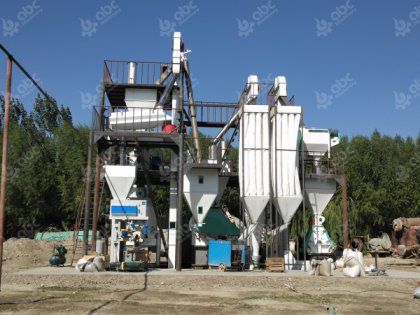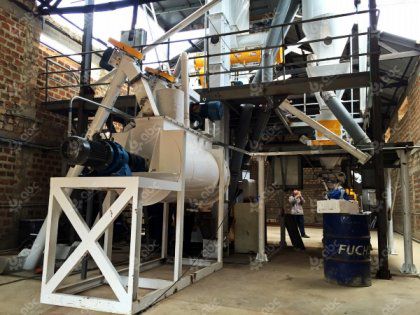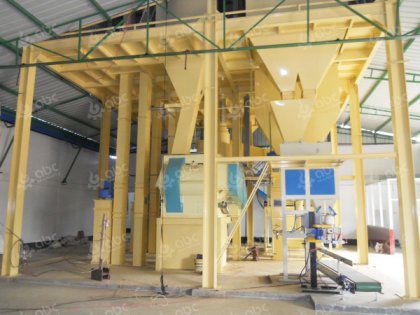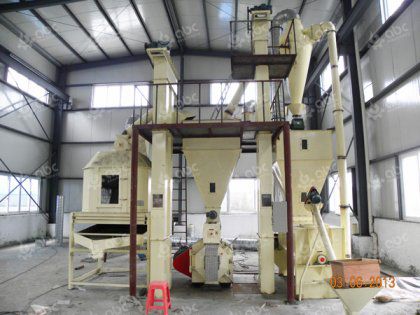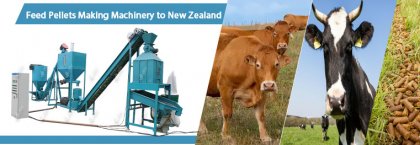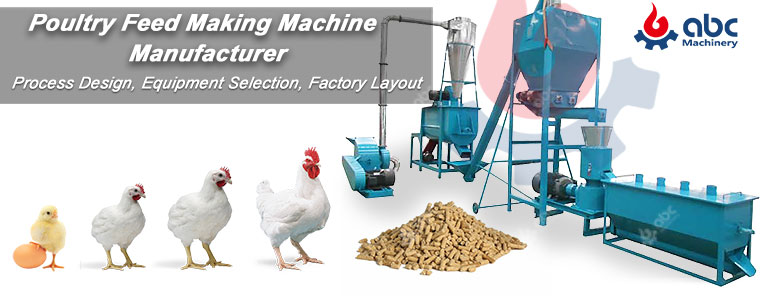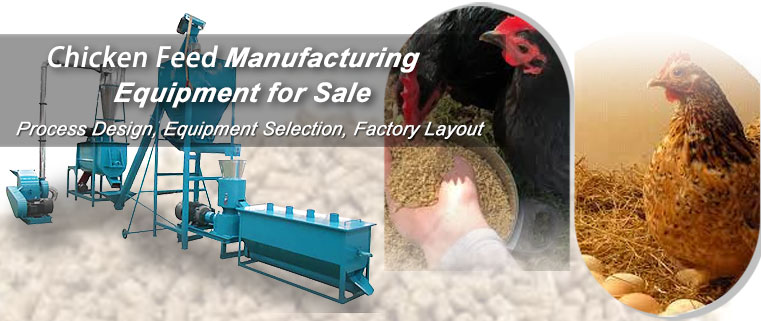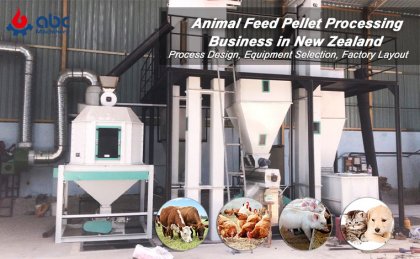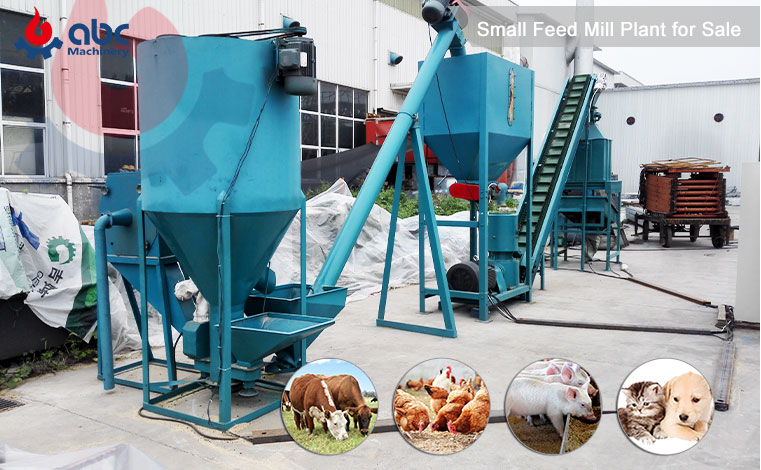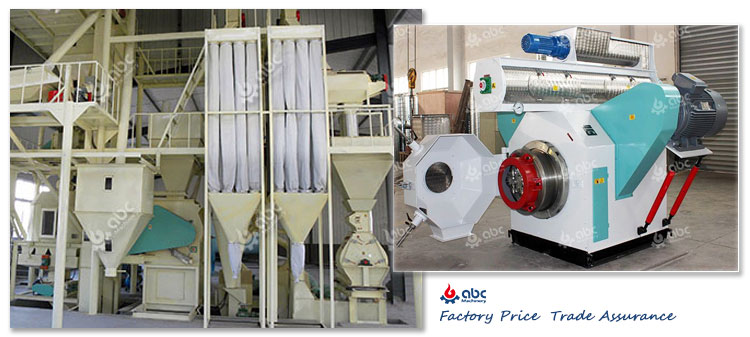Starting a poultry feed manufacturing business requires a complete business plan and customized feed processing plant layout. Get an auxiliary systems design guide for your poultry feed plant. As a professional manufacturer and supplier of poultry feed pellet mills, we provide end-to-end solutions for your feed production operations.
Our 8-10TPH feed production line is a real proof: it steadily hits 80,000+ tons annual output, and success lies not just in core equipment. Our designed raw material reception feeds production non-stop, the warehouse cuts spoilage by 15%, and the central control room slashes downtime by 25%. This shows auxiliary workshops are key to a poultry feed manufacturing factory's efficiency—exactly what this guide explores.
1. Raw Material Reception Design for Poultry Feed Plants
An efficient reception area is the foundation of profitable feed plant layout, handling 15–25 daily truckloads while maintaining 95%+ material supply timeliness.
Core Process Flow & Layout Logistics
An efficient reception design is built on a logical, unidirectional flow to prevent bottlenecks and cross-contamination. The standard sequence is:
-
Vehicle Weighing & Scheduling: Inbound trucks processed through pitless weighbridges and assigned to dedicated unloading bays.
-
Sampling & Inspection: Feed-grade quality verification through automatic cross-stream/manual sampling probes.
-
Controlled Unloading: Specialized hoppers designed for poultry feed ingredients (e.g., cereals, proteins) with anti-bridging protection.
-
Pre-Processing: High-intensity grate magnets remove metallic contaminants; pre-crushing optimizes particle size for poultry feed formulation.
Essential Infrastructure & Equipment for Poultry Feed Production
-
Receiving Hoppers/Pits: Designed with ≥60° food-grade stainless steel slopes to maintain ingredient integrity.
-
Conveying Systems: Heavy-duty bucket elevators and enclosed drag conveyors customized for poultry feed raw materials.
-
Dust Control: Centralized explosion-proof dust collection systems mandatory for grain processing safety.
Optimize the raw material reception process in your poultry feed pellet production to cut 15% of handling time! whether you’re an investor or farmer building a feed pellet plant to make high-quality livestock feed pellets for chickens, cattle, sheep, pigs, and more, connect with ABC Machinery’s engineering team to get a customized reception zone blueprint and equipment cost!
2. Warehouse Layout Optimization for Poultry Feed Storage
An effective warehouse layout for poultry feed raw materials reduces spoilage rates by 20% and maintains 30‒60 days of raw material inventory, providing essential support for continuous production. The core of silo design lies in the strict segregation of different ingredients to prevent cross-contamination.
-
Environmental Control and Storage Systems
Stringent environmental management maintains temperature at 15–20°C and humidity below 14%, reducing material waste by 8% annually. Silos with capacities of 500–1,000 tons, equipped with level sensors, are used for bulk storage. Axial fans (one per 200m²) and real-time sensors ensure stable storage conditions.
-
Layout and Operational Efficiency
Aisles designed at 1.2–1.5 meters wide accommodate forklifts with 3–5 ton load capacity. Bagged ingredients are stored on standard pallets (1.2m×1.0m), stacked no more than 8 layers high. All storage zones are clearly labeled to ensure accurate inventory management and traceability.
Effective feed mill planning ensures operational efficiency, safety, and consistent quality throughout the production process. Contact us for a tailored layout design that meets your capacity and operational requirements.
3. Central Control Room: The Feed Production Plant’s Operational Hub
The central control room serves as the intelligent core of modern poultry feed production, integrating process monitoring, formula management, and precision batching into a unified operational platform.
-
Real-Time Monitoring and Formula Control
The system monitors 100+ parameters—including conveyor speeds, mixer temperatures (with alerts exceeding 80°C), and real-time ingredient consumption—enabling immediate intervention to avoid downtime. Formula management modules ensure precise control of raw material dosing, guaranteeing batch-to-batch consistency and reducing formulation errors.
-
Infrastructure and Fault-Tolerance Design
Designed within a 20–30 m² space with 4–6 workstations (dual monitors each), the layout supports multitasking across production areas. A 4-hour backup power supply prevents disruptions, while simplified interfaces allow intuitive equipment control without specialized training. Integrated inventory updates every 15 minutes minimize stock-outs and cut emergency purchases by 30%.
Integrating Formulation and Technology for Poultry Feed Production
A successful poultry feed mill project integrates specialized formulations with advanced processing technology to form a cohesive operational system. Nutritionally optimized feed recipes must align with precision batching systems, automated conditioning, and pelleting lines to ensure product quality and digestibility.
The entire process—from raw material reception and grading, automated warehouse management, and dedicated production lines—must be designed to maintain ingredient integrity and prevent cross-contamination. Centralized control room supervision enables real-time monitoring of formulation accuracy, equipment performance, and quality parameters. This holistic engineering approach ensures consistent poultry feed quality, high production efficiency, and long-term operational competitiveness.
Poultry Feed Production Layout Design for Business
Generally speaking, different poultry species (e.g., chickens, ducks, geese) require distinct feed formulas, and customers also have varied output demands. Thus, we customize poultry feed production layouts based on each customer’s specific poultry type, formula, and output needs.
We’ve tailored numerous poultry feed production lines for clients, who expressed satisfaction with our designs after receiving the equipment. Here are some successful cases for reference. >>> (Read More: 1-30TPH Chicken Feed Pellet Project Factory Layout Design)
| Project Output | Project Name |
|---|---|
| 1-2 TPH | Chicken Feed Production Line in Uganda |
| 2-4 TPH | Animal Feed Manufacturing Plant in Uzbekistan |
| 10 TPH | Medium Poultry Feed Processing Plant for Poultry and Livestock |
| 20 TPH | Large-Scale Commercial Poultry Feed Factory |
If you are planning to establish a poultry feed production plant and seeking professional support, feel free to contact us for a customized project plan and detailed cost analysis! Our technical team will help you optimize your investment and design an efficient, competitive feed manufacturing system.



